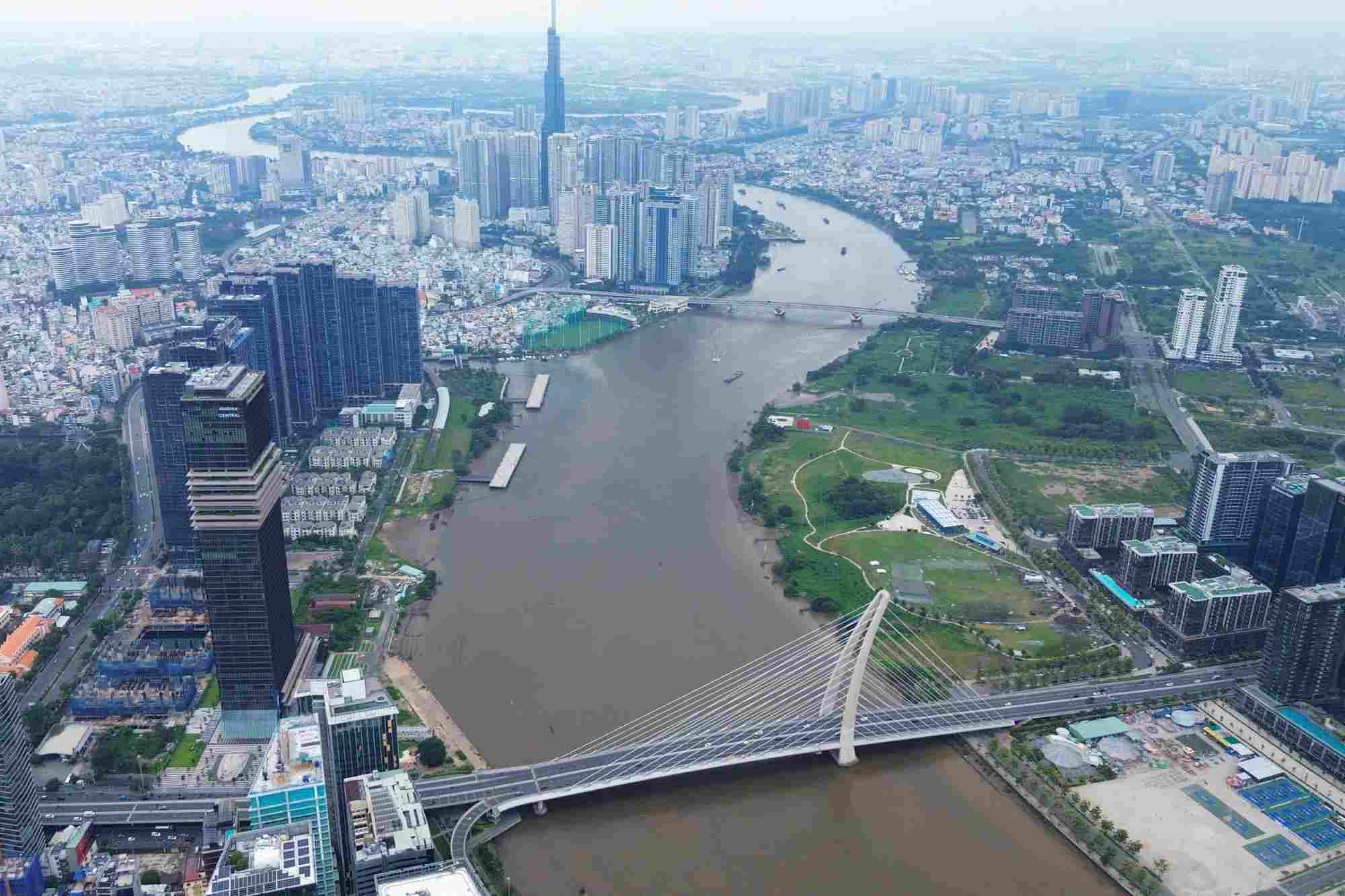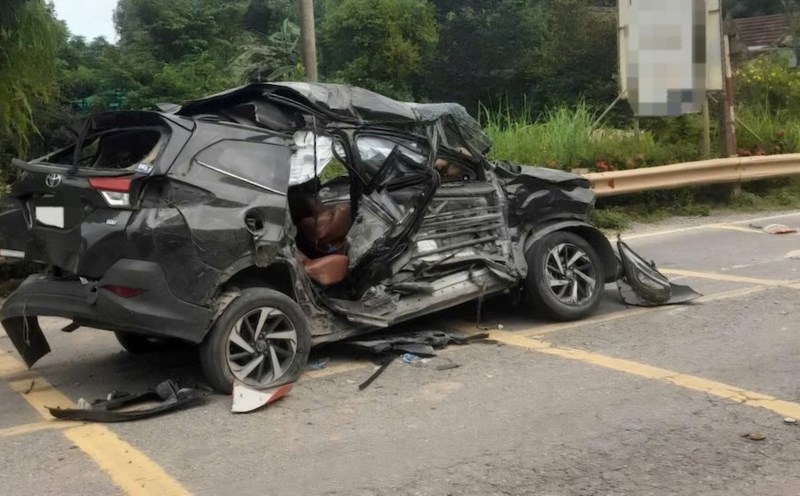Quick recovery, creating a foundation for a new period
The 2020 - 2025 term marks the overcoming of difficulties of Ho Chi Minh City. From being a locality heavily affected by the COVID-19 pandemic, the city has affirmed the bravery of the leading urban area, quickly recovered and regained growth momentum.
If in 2020, the economy increased by only 1.39%, and in 2021 GRDP decreased by 6.78%, then by 2022, Ho Chi Minh City will break through with a growth rate of 9.03%. In 2023, growth reached 5.81%, but maintained the trend of "higher quarter-on-quarter", and then in 2024 it increased to 7.17%, creating a foundation for a prosperous 2025 entrance. In the first quarter of 2025 alone, Ho Chi Minh City's GRDP reached 7.51% - the highest level compared to the same period since 2020.
After merging with Binh Duong and Ba Ria - Vung Tau, in the first 6 months of the year, the GRDP of Ho Chi Minh City has only grown by an estimated 6.56% (excluding crude oil) and 7.49% (excluding crude oil).
Draft of the Political Report of the 1st Ho Chi Minh City Party Congress (term 2025-2030), Ho Chi Minh City's GRDP in 2025 is estimated to reach 3 million billion VND, accounting for 23.1% of the country's GDP; GRDP per capita is 1.7 times higher than the national average. Budget revenue reached VND 737,000 billion, contributing 33.4% of total national revenue.
Over the past term, many key infrastructure projects have changed the face of the city. Metro Line No. 1 (Ben Thanh - Suoi Tien) has officially been put into commercial operation since the end of December 2024, recording an average of more than 53,000 passengers/day, peaking at 7,497 passengers/hour/way, reaching about 14 million passengers after nearly a year of operation.
On this momentum, Ho Chi Minh City is implementing Resolution 188, focusing on simultaneously implementing many major transport projects, promoting urban development.
Resolution 31.NQ/TW and Resolution 98/2023/QH15 pave the way for Ho Chi Minh City to implement a series of strategic projects: International Financial Center, Can Gio International Transit Port, free trade zone with Cai Mep Ha port.
Ho Chi Minh City persists in promoting science - technology, innovation, and digital transformation. The vibrant startup ecosystem has put the city in the top 5 regions for startups, ranking 2nd in Southeast Asia for Fintech, ranking 110th globally for innovation.

Super urban vision - super connection
In the coming period, Ho Chi Minh City sets a target of GRDP growth of 10 - 11%/year, by 2030 it will reach 14,000 - 15,000 USD/person. Social investment capital reached 35 - 40% of GRDP; TFP contributed 60% of growth. The digital economy accounts for 30 - 40% of GRDP; expenditure on research and development (R&D) reaches 2 - 3% of GRDP; allocates 4 - 5% of the annual budget for science - technology and digital transformation.
According to the development orientation, Ho Chi Minh City will build a multipolar - super connected model with the following dynamic axes: Cai Mep - Thi Vai seaport, Thu Duc - Di An - Tan Uyen high-tech terminal, Thu Thiem financial terminal, Tay Bac logistics.
Ring Roads 2, 3, 4 and the Ho Chi Minh City - Moc Bai, Ho Chi Minh City - Chon Thanh, Bien Hoa - Vung Tau, Ben Luc - Long Thanh Expressways will be accelerated.
Ho Chi Minh City also aims to build an urban railway system according to the TOD model, a cargo railway connecting Cai Mep - Thi Vai port with Binh Duong, exploiting waterway transport and coastal roads, and upgrading Con Dao airport. Strategic urban areas such as Thu Thiem, Phu My Hung (phase 2), Can Gio, Vung Tau, Ho Tram will be completed, becoming a new driving force for development.
Architect Ngo Viet Nam Son said that after the merger, the city will own a coastline stretching from Can Gio to Vung Tau, Ho Tram, Con Dao - a rare advantage for developing the marine economy. The Cai Mep - Thi Vai - Can Gio port cluster is oriented to become a leading logistics center in the region, serving industrial parks in Ho Chi Minh City, Binh Duong, Dong Nai, Ba Ria - Vung Tau, and connecting the Southeast, Mekong Delta and Central Highlands regions. When the multi-modal infrastructure chain (waterway, ministries, railways, aviation) is completed, logistics efficiency can increase 10 times today.
Dr. Tran Du Lich - Chairman of the Advisory Council for the implementation of Resolution 98 of the National Assembly - said that Ho Chi Minh City is adjusting all plans in the new space after the merger. Mr. Tran Du Lich emphasized that there is a lot of room to implement Resolution 98. If implemented effectively, the projects will create a strong investment boost in the medium and long term. Ho Chi Minh City also proposed to "upgrade" some contents of Resolution 98 to synchronize with the development programs of financial centers and urban railway networks.
Dr. Tran Du Lich optimistically commented that in the 2026-2030 period, Ho Chi Minh City will be like a "big construction site" with a series of projects, creating momentum for strong economic growth, while expanding opportunities to attract strategic investors in the fields of sports, culture, and entertainment, especially in the Ba Ria - Vung Tau and Binh Duong regions.











